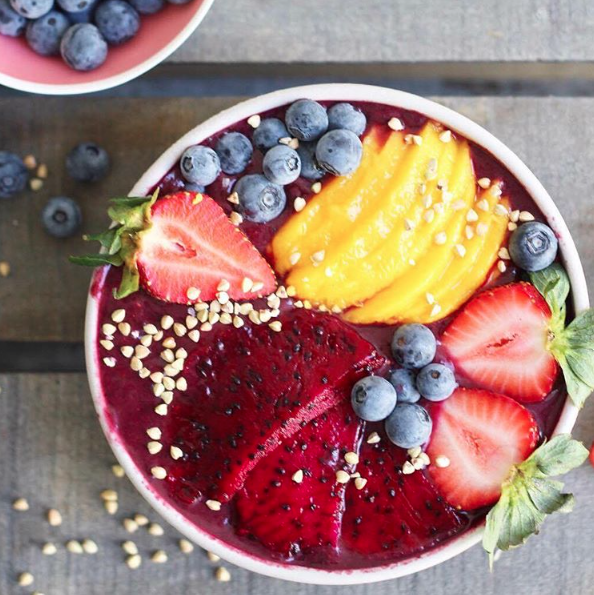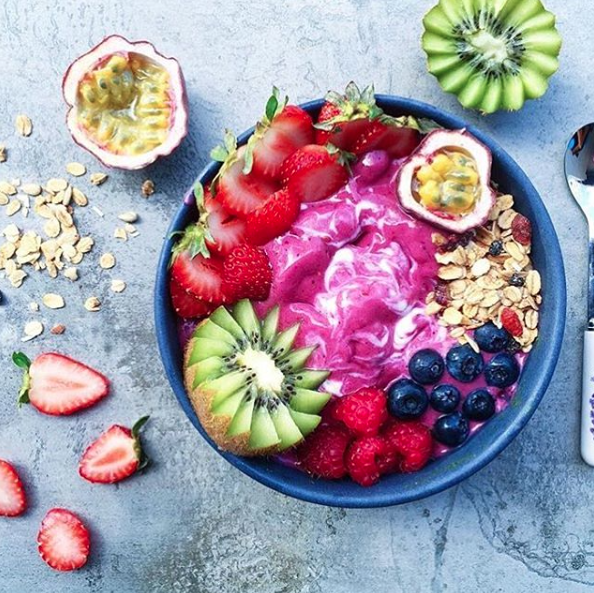Besides the rainbow food trend that exploded earlier this year, smoothie bowls have taken over social media. And with good reason: they’re colorful, delicious, and fun to eat. What more could you want?
However, they have been categorized as “healthy,” which makes sense at first glance. You can put in your daily servings of leafy greens with tasting them, and they’re always full of fruits. The fact is that smoothie bowls are much less healthy than traditional smoothies.
Traditional smoothies are just your bare ingredients. Fruits, veggies, and ice or yogurt. If you want a more robust, high-calorie option, there are ways to add protein and fat. But this isn’t the norm.

Photo courtesy of @healthsynergy on Instagram
Smoothie bowls are full of sugar, and no amount of kale can balance that out. These bowls often call for larger servings of fruit and have bigger portions, leading to high volumes of calories and sugars. Some smoothie bowls can be over 1,000 calories.
If you’re not making it at home, it can be even worse for you. Most smoothie chains will use fruit juices and purees with added sugar, which can result in over 130 grams of sugar in your breakfast.

Photo courtesy of @wellofnourishment on Instagram
Where the smoothie bowls really go calorie heavy is in the toppings. Recipes often call for large amounts of nuts, peanut butter, avocado, dried fruits, granola, and coconut, which boost up the fat, sugar, and calorie numbers. Some of these are healthy fats, but too much can just be excessive calories. Things like granola and dried fruit will add a lot of unnecessary sugars and make your breakfast more of a dessert.
There are ways to make smoothie bowls the right way. Using greek yogurt, fresh fruit and veggies, and protein filled nuts like almonds will make sure you’re getting health benefits without losing flavor. It’s also totally fine to overload your smoothie bowl every once in a while, but making it your morning routine can do more harm than good.


